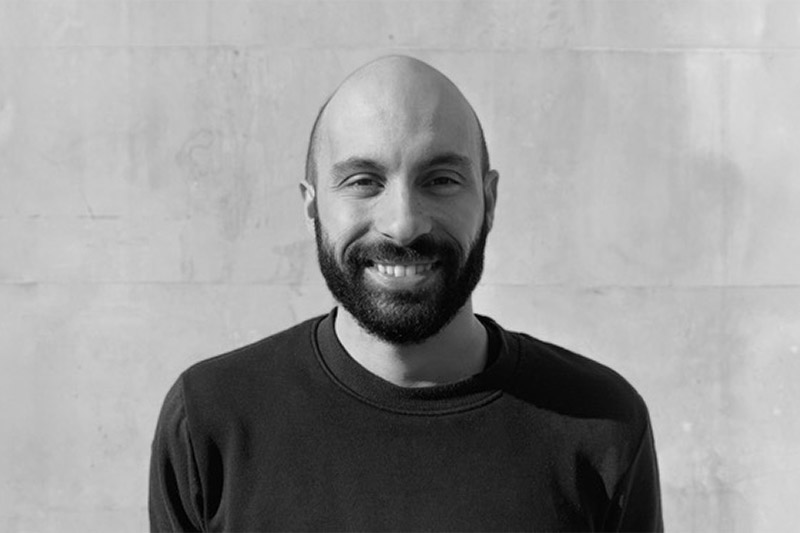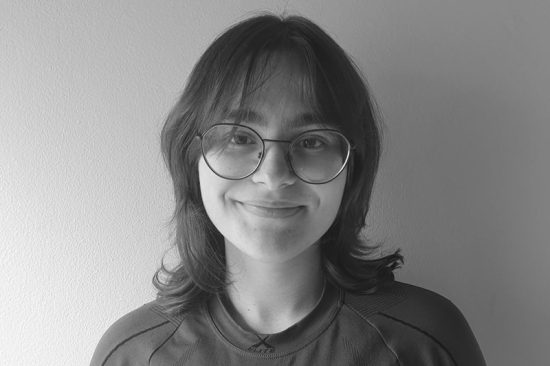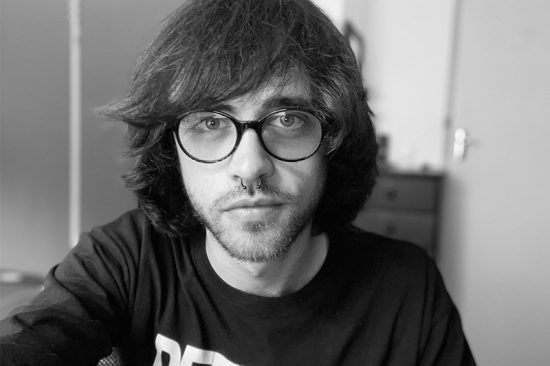
Pedro Silva is a cross-media designer and researcher at the Computational Design and Visualization Lab. He holds a BA and MA in Design and Multimedia from the University of Coimbra, Portugal where he is also currently a PhD candidate in information visualization. His design interests include information visualization, computational art, and generative design as well as typography, editorial, and graphic design.
“To know that I did something somebody I’ll never know will appreciate, that may influence their own work—you can’t ask for more than that.”
TPP45S Of the forty-five visuals you created, which is your favorite? Why?
PEDRO SILVA Paul Brown. It’s the most simple and accurate representation of an insect—in this case, a butterfly. The other ones are more visually cluttered.

TPP45S In your winning project Instamorphs, you transformed the names of forty-five influential digital designers into generative images patterned after Richard Dawkins’s Biomorphs. Each letter of these designers’s names was translated into the different points of the bodies that form the Instamorphs. Why did you make the choice to use the names of the artists as the basis for your insects’ designs instead of the titles of their most prominent piece of work?
PEDRO SILVA The name is the most representative thing about a person, and because of that, I think it is the most accurate way to represent a given person. I think our name is our door for introducing ourselves.

TPP45S What was your initial response looking at the Phaistos Disc?
PEDRO SILVA I really like anthropology. For example, the Rosetta Stone was like the first Google Translate. It helped us understand three different languages. On the other hand, the Phaistos Disc is a mystery to us. I love to think about who it could have been—who made those symbols. Because there must be some meaning, it must be some language from the past that no one has recorded. Because I love to understand the concepts, the motives behind the project, it was a challenge for me that the Phaistos Disc’s meaning still hasn’t been discovered. But in a nutshell, I was intrigued.
TPP45S Why do you think an artifact from the past could be relevant to you and your creative practice?
PEDRO SILVA If I understand the pure work of graphic design or a topology, or signals that are used in the past, knowing that can only be helpful. I think we can never have too much information.

The grid process behind Instamorphs‘s creation.

TPP45S The Instamorphs are meant to represent that, in your words, “Virtual organisms are instants yet they will live forever.” What does it mean to you, as a designer, to know your Instamorphs will live forever?
PEDRO SILVA It’s very cliche, but I would love to leave a mark in this world. I can’t actually be helpful to humanity—I’m not a doctor. But to know that I did something somebody I’ll never know will appreciate, that may influence their own work—you can’t ask for more than that. Somebody in the future might even do a similar work about graphic designers and use my name.
TPP45S In your artist statement, you mentioned that the way the people of today communicate and relate with each other through the digital world rather than the real one “must be considered.” The use of the word “must” is very urgent—why must humanity, especially designers, think about how we communicate in such a digital-focused society?
PEDRO SILVA Every step and every action we make on the internet is recorded permanently—like the Phaistos Disc. It’s still around today, and our actions on the internet will still be here way after we will.
And [with the internet] we have the power to destroy entire organizations. If you say something bad about someone or someone’s work, and have a lot of followers, you have a lot of power. So it’s like that quote from Spider-Man, right? “With great power comes great responsibility.”
TPP45S How do you feel the digital landscape will influence design in the future?
PEDRO SILVA It’s already happening. Right now, platforms like ChatGPT are replacing or improving our work.
I must say I’m a little bit concerned about the fast speed we are operating in the digital world. We put our efforts into the machine and we do nothing. I think design is missing that creativity and freedom we had in the past. We are giving creativity to the machines, when the machines can only do what is given to them. So I think in the future, design is going to be less differentiated.
TPP45S The humans who created the Phaistos Disc—if it’s not a hoax—will never be able to tell us what its forty-five symbols mean. But you are here with us today, to talk about your own set of forty-five symbols. What is it that you hope people take away from your project?
PEDRO SILVA The most detrimental part of my project is looking for a unique or at least a not very common way to present the most common symbols that we know—letters.
I think when people look at this particular project they’ll think, “Oh, that’s a nice way to represent names.” It could inspire them to look at new paths, new representations for text: my project is a door for new possibilities.
TPP45S What do you believe are the biggest challenges of this upcoming generation of visual artists/designers?
PEDRO SILVA They [the upcoming generation of visual artists] don’t try anymore to study the past and explore what has been done. In university, we’ll give them a project to do and they’ll do it right away. They don’t try to understand it, they don’t ask why.
We have a lot of rules in design—how to apply typography, how to apply color, and now they [upcoming visual artists] have tools that do everything for them and they don’t understand why it’s done that way. So, to answer your question, I think it’s seeking knowledge and looking at the literature. They’ve stopped searching and I think that’s very, very concerning.

TPP45S What does your project tell audiences of today and tomorrow about our current anthropocene and human impact on our planet?
PEDRO SILVA Actually, my forty-five symbols, my forty-five authors—some of them are still alive. And maybe that’s precisely the message? People who are and are not alive can live together in the same digital world—in the world of today. In my project, these authors, some of them alive, and some of them not, live together in these small squares, and you can’t tell them apart. There is space for all of them in the digital space.

Pedro Silva
Pedro Silva is a cross-media designer and researcher at the Computational Design and Visualization Lab. He holds a BA and MA in Design and Multimedia from the University of Coimbra, Portugal where he is also currently a PhD candidate in information visualization. His design interests include information visualization, computational art, and generative design as well as typography, editorial, and graphic design.
Instamorphs
Winning Project Open Call 22/23


